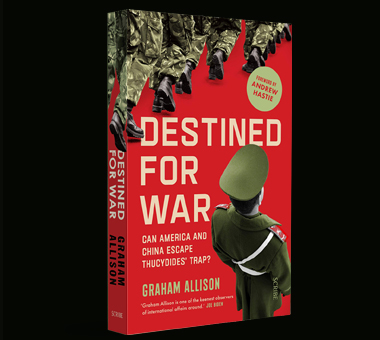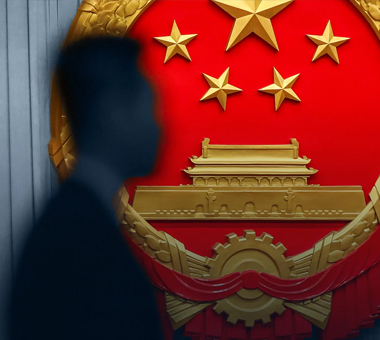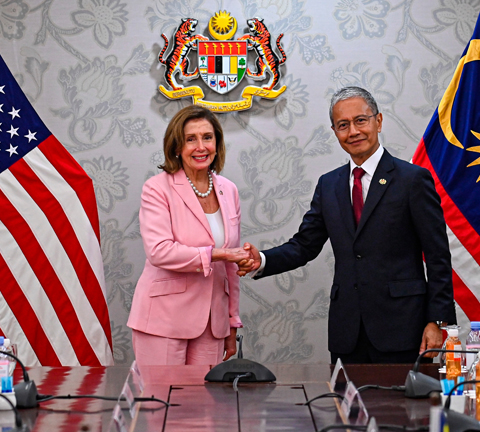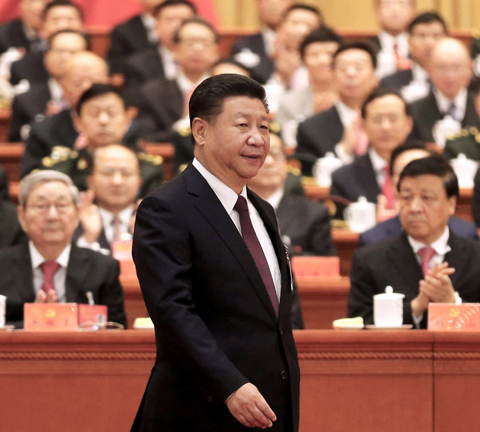Introduction
In his classic book “Man, the State, and War” the American international relations theorist, Kenneth Waltz, presents three images to explain the causes of war: first: the image of conflict caused by bad actors, i.e., leaders with an unusual tendency toward aggression; second: those originating from bad states, usually undemocratic; and third: the image associated with the structure of the international system, an interpretation favored by most realist academics.
In the case of China, the first image blames President and Chinese Communist Party leader, Xi Jinping, for consolidating power. While a less dangerous school of thought clings to the second image, where authoritarianism is necessarily aggressive, even if it is not concentrated in the hands of a single individual. The third image is the lens, through which (Thucydides' trap) interprets the great-power relations.
The first and second images tend to be less credible to those with a comprehensive understanding of history, as democracies can be warriors, their leaders are usually constrained by domestic politics, the international system, and their sense of self-preservation. While the idea that "modern China is an aggressive state" is popular among politicians, but this is not the case among academics and those who take a more historically enlightened perspective.
Historically speaking, democracies have shown dominant behavior: the United States of America and the United Kingdom have created two global empires. In addition, historical models show that authoritarianism can coexist without provoking major conflicts, as evidenced by the Vienna system of the "Europe Concert"; the name given to the arrangement by which five mostly undemocratic powers on the continent. Such powers were able to settle disputes peacefully for most of the nineteenth century.
Accordingly, for those who argue that the United States should treat China as an adversary, they depend on their structural interpretation of the international order, from the perspective of Kenneth Waltz's war interpretation. An example of which is what University of Chicago political science professor, John Mearsheimer, wrote in 2006 "If China continues its surprising economic growth over the next few decades, the United States and China are likely to engage in intense security competition, with great potential for war".
Mearsheimer's assessment was not based on any of these two great powers’ domestic politics or culture of, but rather he depended on the idea that states could not trust each other, and that great powers would always compete for influence.
More recently, John F. Kennedy School professor of international relations, Stephen Walt, objected to those who believe that the United States and China are likely to coexist peacefully if America changes its position: In a quote from his writings, he states that "since each is the greatest potential threat to the other, they will inevitably look to each other with extreme caution, and will make great efforts to reduce the inevitability of the other to threaten their fundamental interests, and constantly look for ways to gain an advantage, just to ensure that the other side does not get the advantage over them".
The Inevitability of the "Thucydides’ trap"
The Inevitability of War: Can America and China Escape the Thucydides Trap?" by American political thinker Graham Allison, published in 2017, which was the Book of the Year by the New York Times, Financial, Times, and Times of London, is the most influential work in pushing the concept of the Thucydides trap, by making it a way to understand the current international politics. The book was praised by prominent figures, such as former CIA Director David Petraeus, former U.S. Secretary of State Henry Kissinger, and Senator Former Sam Nunn, and former U.S. Secretary of Defense Ash Carter and William Cohen. Also, the book inspired the Harvard Project, created by Allison himself, an ongoing research effort to expand and facilitate discussion about the findings of his book. The book has been cited by many researchers nearly 800 times until now. Perhaps no other book, specialized in international relations in the past decade, has had the same inevitability of influence.
For Allison, the specific question about the global order, of this generation, is whether China and the USA can escape the Thucydides trap. He concludes that:
If Hollywood is producing a film about war between China and the United States of America, then the principal actors will not find a better American model than Donald Trump to bring that scene closer, as Trump’s insistence on "blaming China first" portends a huge end. Will Washington and Beijing follow in the tragic footsteps of Britain and Germany a century ago? Or will they find a way to avoid war as effectively as the United States did in formulating a Cold War strategy, to meet the challenge posed by the Soviet Union?
Allison also illustrates the deficit of "scientific history" with his realpolitik assumptions, this is when he proposes that "war is not inevitable" (at least in 4 of the 16 examples), where the problem with vision and methodology lies in the fact that the concept of the "Thucydides trap" was formulated exclusively in Western military-strategic terms, showing little sensitivity to how China and the Chinese frame the question or issue at hand, not taking into account the contexts of Chinese specificity, and whether there is -in fact- any evidence of China's vision for the future within these terms.
The first criticism of realpolitik's assumptions is that "scientific history" is a dominant Western historical method, that assumes objectivity in framing the question, without reference to other frames of cultural history, specificity, and difference of contexts, in addition to what Xi Jinping calls the "Dream of China" which deeply expresses the aspirations of hundreds of millions of Chinese, who want not only to be rich, but also to be strong. The essence of China's civilizational doctrine lies in the belief – or perception – that China is the center of the universe.
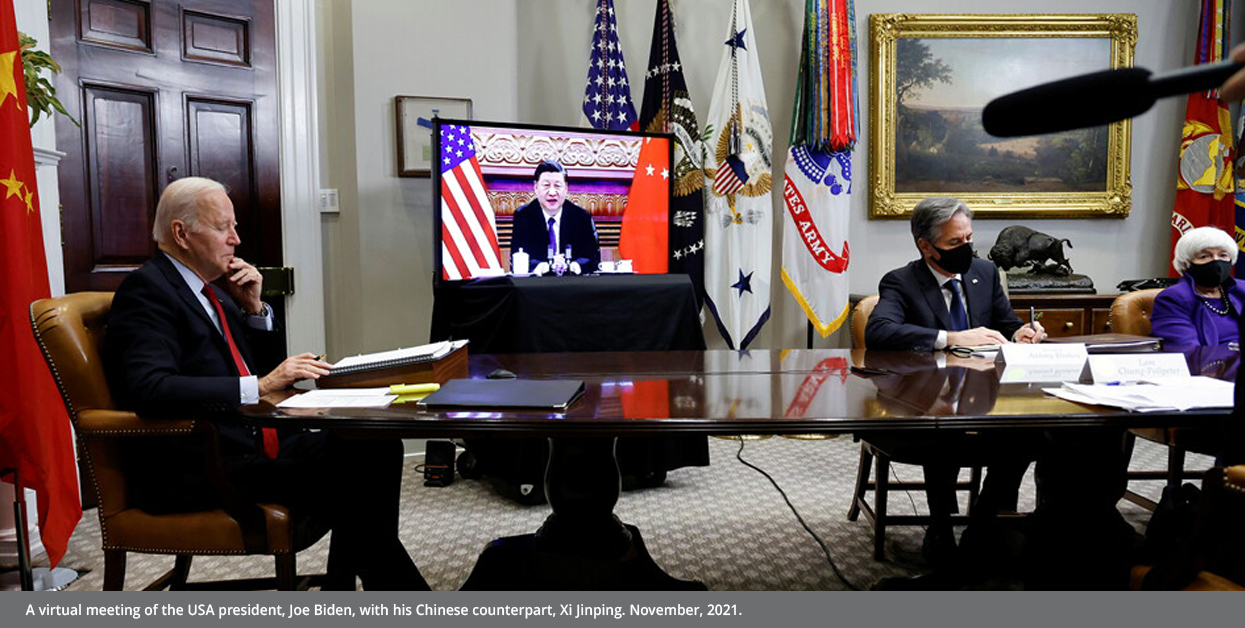
this sense, China as a rising power is really threatening to displace the United States of America from positions, which many have come to believe to be its natural sites. In short, this is a classic Thucydidsian rivalry, with all that that means, and with the real danger it entails of the possibility of the break out of a catastrophic war that no country wants.
In order to understand this book, we should first analyze the concept of the (Thucydides trap) as an intrinsic term in the field of modern international relations: the famous Greek historian, Thucydides, explained the Peloponnesian War that ended the young state of ancient Greece. Thucydides formulated the hypothesis that it was the rise of Athens, and the fear it raised in Sparta, was what made war between them be inevitable. To answer the question of how does the Thucydides trap affect international relations? The basis for the answer is the threat of a rising power to displace a dominant and entrenched ruling power, often followed by violent conflicts with serious consequences, even if they are not inevitable.
This is the central idea in Graham Allison's book. In order to prove it the author has studied the issues of the rising powers, that have challenged the hegemonic power over the past five centuries, and examined 16 such cases, where he found that 12 of them ended in open conflict, as well as the large number of cases that led to the war, the matter that led Allison to the semi-historical hypothesis that a rising power that threatens to displace an entrenched ruling power can lead to war or other conflicts.
Today, according to Allison, China as the unstoppable "economic giant" is facing off against the "arrogant" United States on the stage of international relations, with both Xi Jinping and Donald Trump vowing to make their countries "great again". Perhaps the seventeenth case of challenging the rising powers of the hegemonic powers might be looming, during the rule of the current US President Joe Biden.
Why War Is Not Inevitable
Graham Allison's book consists of four chapters: The Rise of China, Lessons from History, A Storm Gathering, and Why War Is Not Inevitable.
Chapter I: The Rise of China
Although the press believes that the Chinese economy is slowing, Allison sees otherwise: between 2011 and 2013, China used and produced more cement than the United States of America used in the entire twentieth century, indicating the size, speed, and scope of China's rise in just one generation. That generation was enough for the rise of China as a potential power to end U.S. dominance in several parts of the world. Here, Allison explains the soft-power strategy that China is using to its advantage, including trade, investment, foreign aid, and climate change policies. It is undeniable that China's influence is increasing, even among the United States' longtime allies, especially in Asia.
As for the rise of China, the author sees at the end of the first part regarding the rise of China that the truth is that China's economic network is spreading all over the world, changing the international balance of power in a way that makes old U.S. allies in Asia is in the favor of China. Allison cited former Singaporean Prime Minister Lee Kuan Yu's vision, that China "slurps Southeast Asian countries into its economic system, because of its vast market and growing purchasing power. Japan and South Korea will indulge in that system that absorbs countries without the need to use force. It will be extremely difficult to fight China's growing economic influence".
Chapter II: Lessons from History
The second chapter presents a historical review of five centuries of European challenges, during which 16 cases of conflict between rising powers and hegemonic powers were recorded. The author used this as a base to measure the current relationship between the United States of America and China. He concludes that "none of these conflicts was inevitable" and noted that the rising powers believed they were only establishing "their rightful place in the hierarchy of the world order".
Chapter III: Storm Gathering
In this chapter, the author goes on to gauge the similarities between the current Chinese aspects of significance and what the United States was doing a hundred years ago in Cuba, the Philippines, Alaska, and Canada. If what President Xi Jinping wants is to "make China great again" then would that be possible without fighting, as many believe? At a time when China is stepping up and training its forces to be ready for any potential emergency, or, in the words of President Xi, China's dream is to "fight and win". In the same context, while Beijing pursues its goals, "deep cultural" differences emerge between it and the USA. Such differences are playing a role in fueling rivalry with the United States, adding more difficulty to such competition, with the inevitability of bringing the two countries closer to the "Thucydides trap."
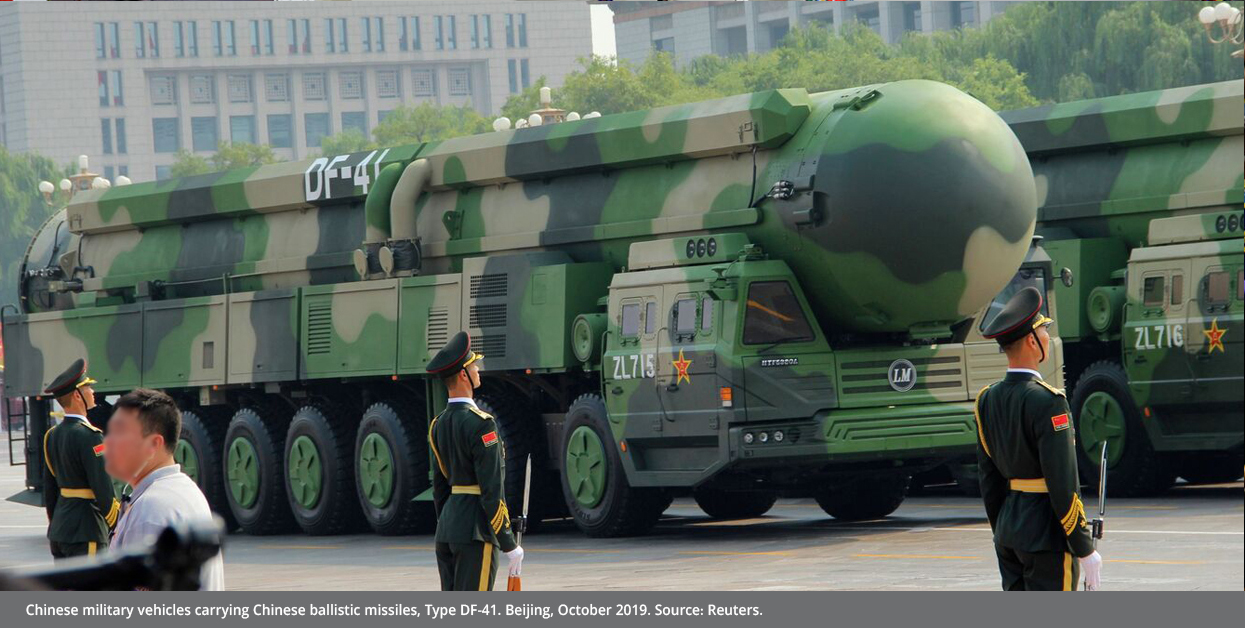
Chapter IV: Why War Is Not Inevitable
In the fourth and final chapter, the author analyzes the four historical cases in which rising and ruling powers have successfully steered their ships across slippery paths, without drifting into war. Based on China's spectacular economic growth, political endeavors, and geostrategic progress over the past twenty years, Allison argues that it is wise not to underestimate China, as former U.S. President Donald Trump did. Instead, the author finds it better to intensify "economic entanglements" with the Chinese, than to look for a way to "humiliate them"; In doing so, each interested party will benefit in the long run. Allison concludes this chapter by suggesting that the United States try to absorb China, negotiate a long-term peace, and redefine the relationship between two great powers.
Reading in "The Inevitability of War" between the Two Powers
Critically evaluating a work of an author with an excellent reputation, like Graham Allison, is a difficult but necessary task. Although (The Inevitability of War) book is a valuable lens through which heads of state, military officers, diplomats, strategists, and scholars can see the current and changing relationship between the United States and China, some of the author's arguments regarding the policy and strategy that the United States should pursue seem inappropriate. For example, the author asserts that "history shows that major ruling powers can manage the relations with competitors, even those that pose a threat to their status, without resorting to war. History has many successes, and can offer many lessons to statesmen today".
However, the challenge here is to distinguish between historical lessons of war prevention, which vary widely to the point of contradiction in some cases. Two cases may be useful in clarifying this idea: in the eleventh case cited by the author, which is the British response to the rising American power in the early twentieth century, Allison points out that Great Britain chose a strategy of "making necessity a virtue, surrendering to the Americans in each conflict with the greatest inevitability of permissible concession". In the fifteenth case, that addresses the Soviet Union's rising challenge to the United States for decades, with a state of "no war" nevertheless. The author describes this approach as "the greatest leap in the strategic imagination in the history of U.S. diplomacy, "a comprehensive strategy of an unprecedented form of fighting" that fostered a cold war "by all means lacking bombs and bullets". However, although the results of those rivalries did not lead to war, in practice; both the United States and the Soviet Union led attacks against each other on many fronts, except for direct military attacks, in what was known as "proxy wars or the support of friendly parties". The above two examples, therefore, offer two historical undeniably different approaches: places of meaningful settlement or the Cold War, so, the advice of "applying history", while wise, still raises questions about history, and how it will be applied to the unique relations between the United States of America and China, with the need to point out the radical differences in the cultural dimension.
Cold War
In addition to the foregoing, there are a number of other issues that require scrutiny: first, the author holds a fairly optimistic view of the Chinese economy, an optimism that does not enjoy consensus among scientists and analysts who track the state of that economy, and second, the unprecedented nature of nuclear weapons challenges (the lessons of pre-1945 situations) as experiments to predict the future of the conflict between the United States and China. At the same time, scientists and strategists should not be skeptical about the historical observations drawn from the pre-nuclear weapons era.
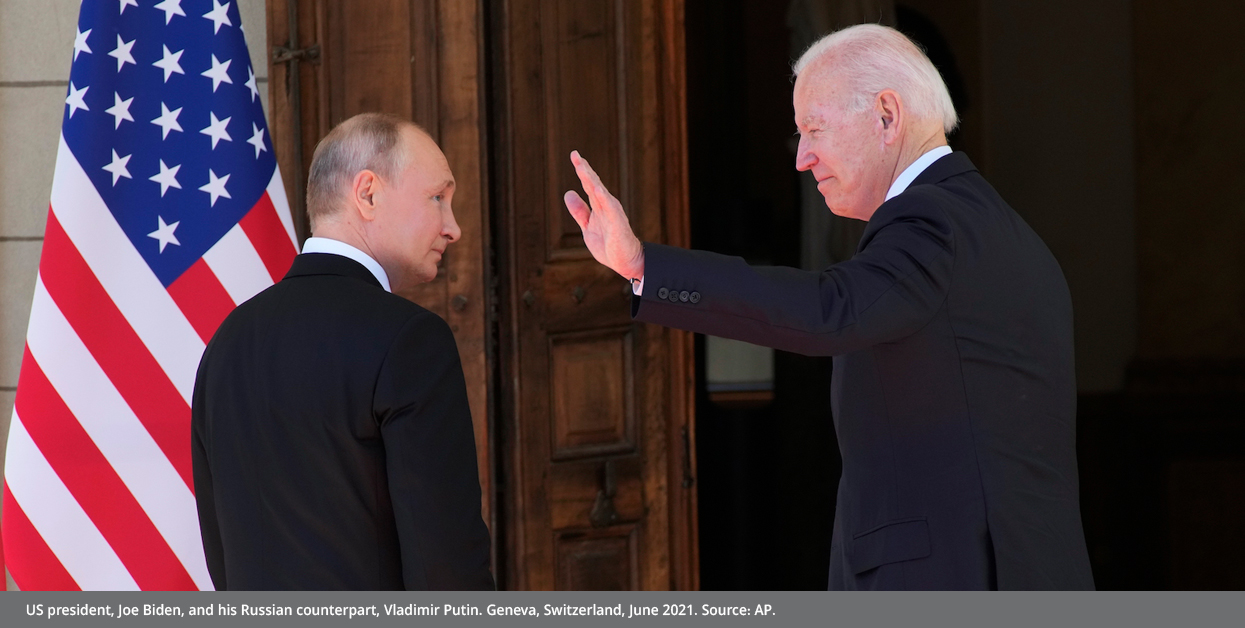
Finally, the book presents a very small and limited dataset of "only 16 cases", consisting mostly of European cases, to support statistically-based claims, and explain China's restricted record in terms of military interventions in particular. So, the question arises: How can we understand China's military strategy without looking at domestic and normative variables?
The opinions expressed in this study are those of the author. Strategiecs shall bear no responsibility for the views and/or opinion of its author on security, economic, social, and other issues, as they do not necessarily represent the views of the Think Tank.
Keep in touch
In-depth analyses delivered weekly.

Related Analyses:







